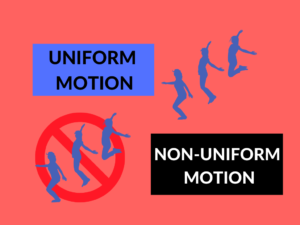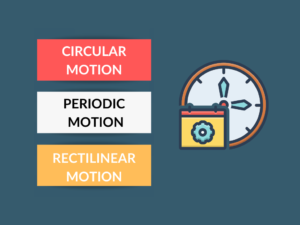Uniform Linear Motion vs Uniform Circular Motion
Have you ever wondered about the differences between uniform linear motion and uniform circular motion? In this article, we will explore these two types of motion, their examples, and their uses. By the end, you’ll have a clear understanding of the distinctions between them.
What is Uniform Linear Motion?
Uniform linear motion refers to the movement of an object in a straight line at a constant speed. In this type of motion, the object covers equal distances in equal intervals of time, maintaining a steady velocity throughout.
Examples of Uniform Linear Motion
Some common examples of uniform linear motion include:
- A car moving in a straight line on a highway.
- A person walking at a constant speed.
- A roller coaster coasting along a straight track.
Uses of Uniform Linear Motion
Uniform linear motion has various practical applications. Some of them are:
- In transportation, such as cars, trains, and airplanes.
- In robotics and automated systems.
- In sports, like sprinting or long jump events.
What is Uniform Circular Motion?
Uniform circular motion, on the other hand, is the movement of an object in a circular path at a constant speed. In this type of motion, the object covers equal angles in equal intervals of time, maintaining a steady angular velocity throughout.
Examples of Uniform Circular Motion
Some common examples of uniform circular motion include:
- Planets orbiting around the sun.
- A car taking a turn on a curved road at a constant speed.
- A spinning top rotating about its tip.
Uses of Uniform Circular Motion
Uniform circular motion finds its applications in various fields. A few examples are:
- In satellite orbits around the Earth.
- In amusement park rides, like Ferris wheels and merry-go-rounds.
- In centrifuges used in laboratories for separating substances.
Differences Between Uniform Linear Motion and Uniform Circular Motion
| Difference Area | Uniform Linear Motion | Uniform Circular Motion |
|---|---|---|
| Path | Straight line | Circular |
| Acceleration | Zero unless acted upon by an external force | Constant inward acceleration |
| Velocity Direction Changes | Does not change | Constantly changes |
| Distance Covered | Equal distances in equal time intervals | Equal angles in equal time intervals |
| Force Acting | Force not always necessary | Centripetal force required |
| Examples | Car on a straight road, person walking | Planets orbiting, cars taking turns |
| Applications | Cars, trains, airplanes | Satellites, amusement park rides, centrifuges |
| Speed Variation | Speed remains constant | Speed can vary |
| Acceleration Magnitude | Acceleration is constant | Acceleration continuously changes |
| Direction | Straight | Curved |
Conclusion
In summary, uniform linear motion involves objects moving in a straight line at a constant speed, while uniform circular motion involves objects moving in a circular path at a constant speed. The key differences lie in the path, acceleration, force requirements, and the variation of speed and direction. Understanding these differences can help us comprehend and analyze various real-world scenarios.
People Also Ask
Here are some common questions readers might have about uniform linear motion and uniform circular motion:
Q: What is the main difference between linear and circular motion?
A: The main difference is that linear motion occurs along a straight line, while circular motion occurs along a curved path.
Q: Does linear motion have acceleration?
A: Linear motion only has acceleration if an external force acts on the object. Otherwise, it maintains a constant velocity.
Q: Is circular motion always uniform?
A: No, circular motion is only considered uniform if the object maintains a constant speed throughout its circular path.
Q: Can an object have both linear and circular motion simultaneously?
A: Yes, an object can have both linear and circular motion simultaneously. An example is a race car moving at a constant speed while taking a circular turn.
Q: How is the force different in linear and circular motion?
A: In linear motion, force is not always necessary, while in circular motion, a centripetal force is required to keep the object moving in its circular path.
By understanding the answers to these questions, you can deepen your knowledge of these two types of motion.



